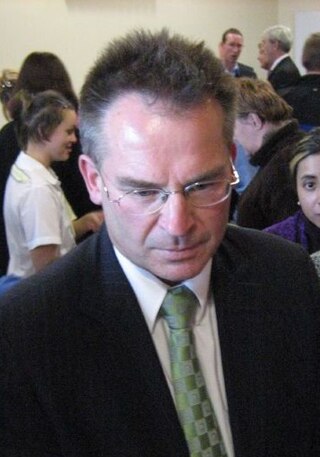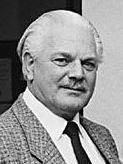
The Country Liberal Party of the Northern Territory (CLP), commonly known as the Country Liberals, is a centre-right political party in Australia's Northern Territory. In local politics, it operates in a two-party system with the Australian Labor Party (ALP). It also contests federal elections as an affiliate of the Liberal Party of Australia and National Party of Australia, the two partners in the federal coalition.

A filibuster is a political procedure in which one or more members of a legislative body prolong debate on proposed legislation so as to delay or entirely prevent a decision. It is sometimes referred to as "talking a bill to death" or "talking out a bill", and is characterized as a form of obstruction in a legislature or other decision-making body.

The Parliament of Australia is the legislative body of the Commonwealth of Australia. It consists of three elements: the monarch, the Senate and the House of Representatives. The combination of two elected chambers, in which the members of the Senate represent the states and territories while the members of the House represent electoral divisions according to population, is modelled on the United States Congress. Through both chambers, however, there is a fused executive, drawn from the Westminster system.

Jonathan Donald Stanhope is a former Australian politician who was Labor Chief Minister of the Australian Capital Territory from 2001 to 2011. Stanhope represented the Ginninderra electorate in the ACT Legislative Assembly from 1998 until 2011. He is the only ACT Chief Minister to have governed with a majority in the ACT Assembly. From 2012 to 2014 Stanhope was Administrator of the Australian Indian Ocean Territories, which consists of Christmas Island and Cocos (Keeling) Islands.

Gary John Joseph Humphries is a Deputy President of the Administrative Appeals Tribunal. He was a member of the Australian Senate representing the Australian Capital Territory for the Liberal Party of Australia from 2003 to 2013. He was the Chief Minister of the Australian Capital Territory from 2000 to 2001; and was elected to the first parliament of the Australian Capital Territory, in 1989, later representing the Molonglo electorate until 2003.

The New South Wales Legislative Council, often referred to as the upper house, is one of the two chambers of the parliament of the Australian state of New South Wales. The other is the Legislative Assembly. Both sit at Parliament House in the state capital, Sydney. It is normal for legislation to be first deliberated on and passed by the Legislative Assembly before being considered by the Legislative Council, which acts in the main as a house of review.
Rosemary Follett is a former Australian politician who was the first Chief Minister of Australian Capital Territory, serving in 1989 and again between 1991 and 1995. She was the first woman to become head of government in an Australian state or territory.

Katherine Ruth Gallagher is an Australian politician who has been serving as the Minister for Finance, Minister for Women, Minister for the Public Service and Vice-President of the Executive Council in the Albanese Government since 2022, and formerly served as the 6th Chief Minister of the Australian Capital Territory from 2011 to 2014. She has been a Senator for the Australian Capital Territory since the 2019 federal election, as a member of the Australian Labor Party (ALP). She previously served in the Senate from 2015 to 2018.

Trevor Thomas Kaine, was an Australian politician who served as Chief Minister of the Australian Capital Territory from 1989 to 1991. Kaine was elected into a multi-member single electorate in the unicameral Australian Capital Territory Legislative Assembly, from 1989 to 2001, initially as a member of the Liberal Party and later as an independent.
Elections to the 1989 Australian Capital Territory Legislative Assembly was held on Saturday, 4 March. This was the first direct election by voters in the Australian Capital Territory (ACT) for their power legislative body.

Terence Kennedy Mills is an Australian politician. He served as chief minister of the Northern Territory from 2012 to 2013 and was leader of the Country Liberal Party (CLP) from 2003 to 2005 and 2008 to 2012.
Craig John Duby, former Australian politician, was a member of the unicameral Legislative Assembly of the Australian Capital Territory between 1989 and 1992, elected to the multi-member single constituency Assembly as a representative of the No Self-Government Party. During his term in office, Duby was a member of the Independents Group and the Hare-Clark Independence Party. Duby was the Minister for Finance and Urban Services and briefly was the Minister for Housing and Community Services in the Kaine ministry. For part of one day, he served as the Leader of the Opposition.

The 2008 Western Australian state election was held on Saturday 6 September 2008 to elect 59 members to the Legislative Assembly and 36 members to the Legislative Council. The incumbent centre-left Labor Party government, in power since the 2001 election and led since 25 January 2006 by Premier Alan Carpenter, was defeated by the centre-right Liberal Party opposition, led by Opposition Leader Colin Barnett since 6 August 2008.
In the United Kingdom, confidence motions are a means of testing the support of the government (executive) in a legislative body, and for the legislature to remove the government from office. A confidence motion may take the form of either a vote of confidence, usually put forward by the government, or a vote of no confidence, usually proposed by the opposition. When such a motion is put to a vote in the legislature, if a vote of confidence is defeated, or a vote of no confidence is passed, then the incumbent government must resign, or call a general election.

The chief minister of the Australian Capital Territory is the head of government of the Australian Capital Territory. The leader of the party with the largest number of seats in the unicameral Australian Capital Territory Legislative Assembly usually takes on the role. Unlike other states and territories, the chief minister is not appointed by a governor or administrator, but elected directly by the Assembly.
The Kaine Ministry was the second ministry of the Government of the Australian Capital Territory, and was a coalition led by Liberal Chief Minister Trevor Kaine and his deputy, Residents Rally party leader Bernard Collaery. It was sworn in on 5 December 1989, when Collaery moved the following motion:

The deputy chief minister of the Australian Capital Territory is the second-most senior officer in the Government of the Australian Capital Territory. The deputy chief ministership has been a ministerial portfolio since its establishment in 1989. Unlike in other states and territories, the deputy chief minister of the ACT is not nominally appointed by an administrator or vice-regal, but by the chief minister.

A general election for the Australian Capital Territory Legislative Assembly was held on Saturday, 15 October 2016.
In the Parliament of Australia, the political parties appoint party whips to ensure party discipline, help manage legislative business and carry out a variety of other functions on behalf of the party leadership. Additional functions of the government party whips is to ensure that a sufficient number of government members and senators are present in the chamber to ensure passage of government legislation and measures and to prevent censure motions succeeding, and to ensure presence of a parliamentary quorum. Their roles in the chamber include tally votes during divisions, and arranging pairs which affects the ability of members and senators to leave parliament during sittings, as well as the entitlement to be absent during divisions.
Section 13 of the Constitution of Australia provides for three aspects of the terms of members of the Australian Senate: the timing of elections, the commencement date of their terms and for the Senate to allocate long (six-year) and short (three-year) terms following a double dissolution of the Parliament of Australia. While members of the House of Representatives and territory senators have a maximum three-year term, state senators have a fixed six-year term, subject only to the parliament being dissolved by a double dissolution.






































